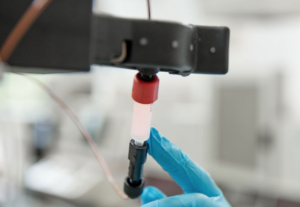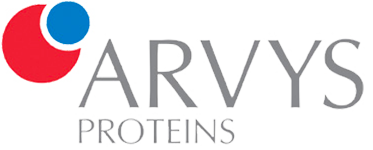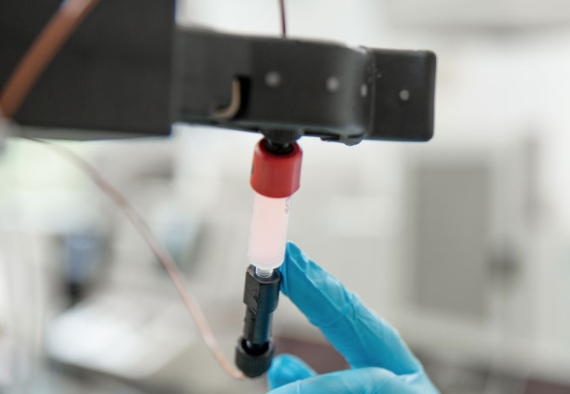When working with proteins, it is essential to exercise a precise degree of control within your solutions. Proteinaceous solutions may contain many different residues from fermentation steps like cell residues, aggregates, or fragments.

One of the common methods of protein purification is gel filtration chromatography that is often used as a polishing step. This method separates protein based on size. Protein size usually correlates with molecular weight; however, the shape of the protein may complicate that correlation in this case. This is because the solution is eluted through a porous gel (usually consisting of agarose, dextran, or polyacrylamide polymers) which traps proteins within pockets formed by the gel. Typically, smaller proteins get caught in these pockets more than larger ones, and thus they spend more time in the column. Using the parlance of chromatography, the ‘mobile phase’ is fractionated within the ‘stationary phase’. Different gels correspond to different sized pores, which can be used to fractionate differently sized proteins. Additionally, the basis of a clean size-exclusion column elution is that the proteins do not react with the column itself.
This basic concept has many variations that are used for more specialized chromatography methods. For example, HIC media is used for separation by hydrophobicity. Since the media is amphiphilic, the resin can be saturated with high ionic strength buffer to change the orientation of its affinity to proteins (towards lower hydrophobicity). A similar technique is ion exchange chromatography, which uses a charged resin to bind proteins of opposite charge. Once bound, the proteins can be eluted by saturating the resin with counter-ions. This separates proteins by the power and the nature of their charge. However, the nature of this technique means that it is sensitive to external factors such as pH, temperature, and buffer composition.
For really specific protein purification, it may be necessary to use the actual ligand of the protein of interest as a binding tool. This is done in affinity chromatography, which uses resins that contain the ligands that bind to specific proteins. For example, lectin is an abundantly common ligand for membrane glycoproteins, and therefore lectin resins are typically used to purify such proteins from solution.
Additionally, if a ligand resin is unavailable, an epitope may be engineered onto a protein via an antigen peptide tag. The most common tag is a FLAG-tag, which is a sequence of 8 consecutive amino acid residues attached to the protein. The simplicity and the compactness of this tag make it very straightforward as a protein tag for purification purposes. Once the purification is complete, proteases may be used to cleave off the tag.

Fast protein liquid chromatography (FPLC) is a method which applies the previous concepts in an industrial setting at a throughput that is reasonable for large-scale purification. The liquid phase is pumped through the stationary phase, and the purification is facilitated through the variety of resin-protein interactions in chromatography. This technique has a smaller-scale analog at even higher pressures used primarily for analytical purposes called high performance liquid chromatography (HPLC). HPLC is a technique used frequently in an industrial setting to increase the resolution of conventional chromatography for analytical purposes. The elution through the resin column is expedited by applying high pressure. By this method, the higher speed of the elution grants lower diffusion and therefore higher resolution. One of the most common variations of this technique is reversed phase HPLC, which is when the resin is hydrophobic, and separates proteins by hydrophobicity. An organic solvent like acetonitrile can be used to elute the proteins through the column.
There are many options for purifying proteins, each with advantages and disadvantages. It is important to tailor the techniques to the specific protein of interest. Factors like protein binding, buffer composition, and protein structure all play a role in a clean purification and keeping the proteins stable and folded.
—
ARVYS Proteins, Inc. is a leader in the space of Protein Characterization & Purification. From protein expression to characterization of antibodies ARVYS Proteins provides protein science services for critical projects.




